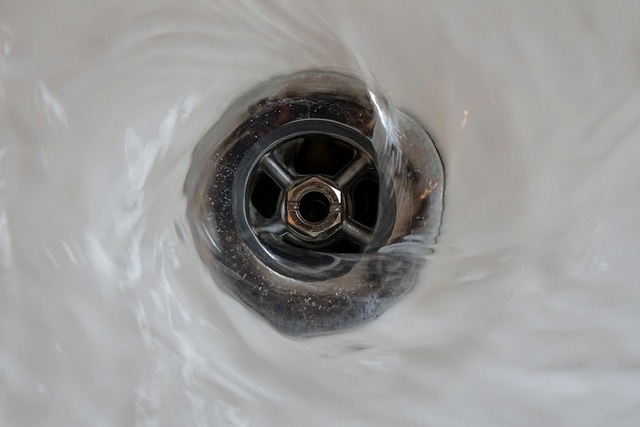Homeowners should watch for signs of a clogged drain such as slow drainage, water backing up, and strange noises to avoid costly plumbing damage. Common causes include foreign objects like grease or toys, tree roots, and improper plumbing installations. Prompt action on early signs of a clogged drain, like slowing drainage or gurgling, is essential to prevent disruptions and health risks. While regular maintenance and home remedies can offer temporary fixes, severe blockages may necessitate professional intervention.
Are you aware that hidden dangers could be lurking in your pipes? Discover the scary signs of a hidden drain clog and stay one step ahead. Recognize the warning signs, understand common causes like foreign objects or root intrusion, and learn effective solutions to prevent severe impact on your plumbing system. Knowing these insights can help you maintain a smooth-running home and avoid costly repairs. Pay attention to these signs of a clogged drain before it becomes a bigger problem.
- Recognizing the Warning Signs of a Clogged Drain
- Common Causes of Hidden Drain Clogs
- The Impact and Solutions for Addressing Clogged Drains
Recognizing the Warning Signs of a Clogged Drain

Many homeowners often overlook the subtle signs that their drains are clogging, which can lead to more severe and costly issues down the line. Recognizing these warning signs is crucial for maintaining a smooth-running plumbing system. One of the most evident indicators is a slow drain—if you notice that your sinks, showers, or toilets are taking an abnormally long time to empty, it could be a red flag. This delay in drainage often signifies a partial or complete blockage further down the pipe.
Another common sign is water backing up into the sink or tub. When water refills in the basin after you’ve drained it, it’s a clear indication that something is obstructing the flow of water through the pipes. Additionally, strange noises like banging or gurgling sounds coming from drains can alert you to potential clogs. These noises occur due to the pressure buildup caused by the partial blockage, and they often become more pronounced over time if left unchecked.
Common Causes of Hidden Drain Clogs

Hidden drain clogs can be a frightening problem, often going unnoticed until they escalate. Understanding common causes is key to early detection and prevention. One of the primary culprits is foreign objects blocking the pipes—from grease and food scraps to toys and personal hygiene products. These items can accumulate over time, slowly narrowing the drainage pathways. Another frequent cause is tree root infiltration, especially in older homes with sewer lines running close to tree roots. As roots grow, they can infiltrate and eventually obstruct pipes, leading to frequent clogs and even pipe damage. Water pressure fluctuations and improper plumbing installations also contribute, as they can lead to weak spots in the drainage system that are prone to clogging.
The Impact and Solutions for Addressing Clogged Drains

Clogged drains can have a significant impact on your daily life, causing disruptions and discomfort. When a drain becomes blocked, it may result in slow drainage, pool of water in sinks or tubs, and even backflows of sewage. These issues not only create unhygienic conditions but also pose potential health risks.
Addressing clogged drains promptly is crucial. The first step is to identify the signs of a clog, such as slowing drainage or unusual gurgling sounds. Regular maintenance, like using drain covers and avoiding flushing non-biodegradable items, can help prevent clogs. For existing clogs, home remedies like baking soda and vinegar or commercial drain cleaners might offer temporary relief. However, persistent or severe blockages may require professional intervention to avoid damage to your plumbing system.
Identifying the subtle signs of a clogged drain is crucial for maintaining a hygienic living environment. By understanding common causes and their impact, you can promptly address these issues. Regular maintenance and effective cleaning solutions ensure smooth drainage systems, preventing costly repairs and health hazards. Stay vigilant for the warning signs of a clog and take proactive steps to keep your pipes flowing freely.
